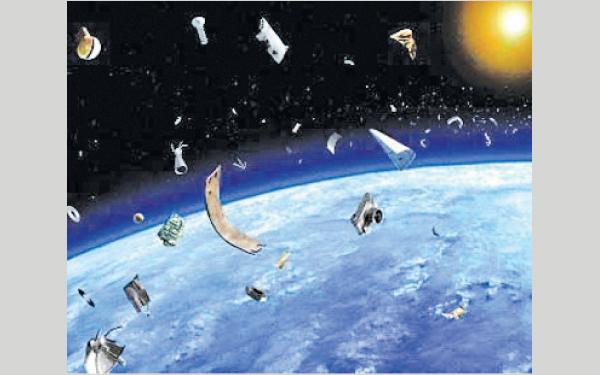
We have been sending satellites to space for over 60 years. To date, we have launched more than 11,140 satellites to space. Of these, 3,372 satellites are currently active and the rest numbering 7,768 are inactively floating in our orbit.
They are called debris, and this debri orbits around the earth and covers the low earth orbit of the earth and block the way to the launching of spacecrafts.
There are 23, 000 pieces of debris larger than a softball going around the earth. They travel at 17,500 mph speed and it is fast enough to damage active satellites or spacecraft. There are half a million pieces of debris the size of a marble and a 100 million pieces of debris the size of 1 millimeter. There is also micrometer-sized debris.
Even tiny paint flecks can damage a satellite or spacecraft when travelling at these velocities. The International Space Station’s (ISS) window was replaced because of damage caused by paint flecks.
In 1996, a French satellite was damaged by debris from a French rocket. China’s 2007 anti-satellite test used a missile to destroy an old weather satellite, and it added more than 3,500 pieces of debris .
The causes of space debris
* Defunct satellites, Satellites have a limited useful life and when their batteries are spent or they break down they are left drifting about in space.
* Missing equipment, Astronauts sometimes drop tools or other objects during work p in space
* Rocket stages.
If we neglect this pollution it will grow bigger and bigger by hitting each other. Therefore, we have to remove all the debris in the low-earth orbit.
There are many space debris removal methods. They are are by a robotic arm, by laser, net capturing, gravity tractor, adhesive method, solar radiation force, electrostatic tractor, gripper mechanism, rope-like method capturing, tentacles capturing and harpoon
S. N. Sasrutha Nayanathul Dias
Grade 8
Sussex College
Kuliyapitiya
